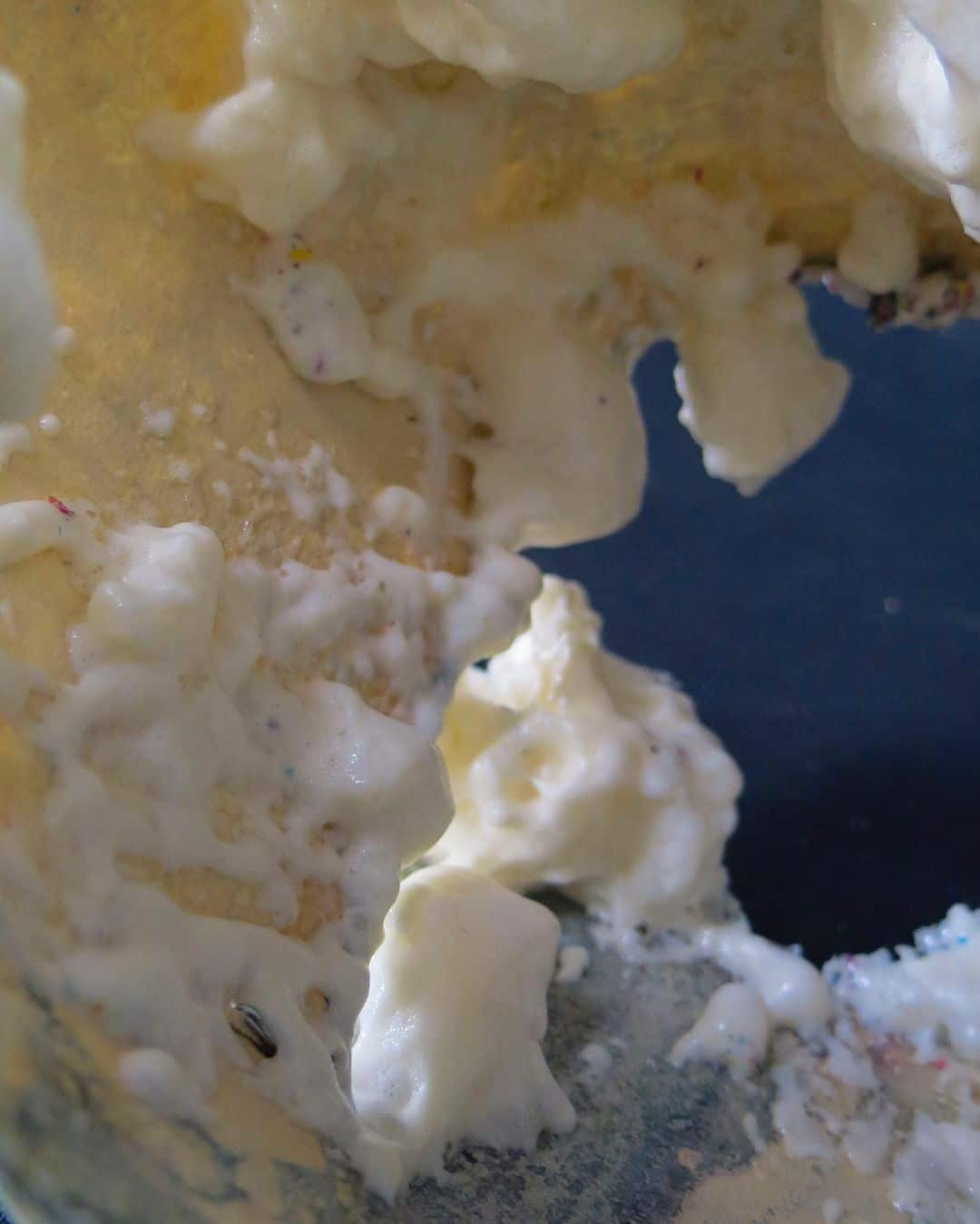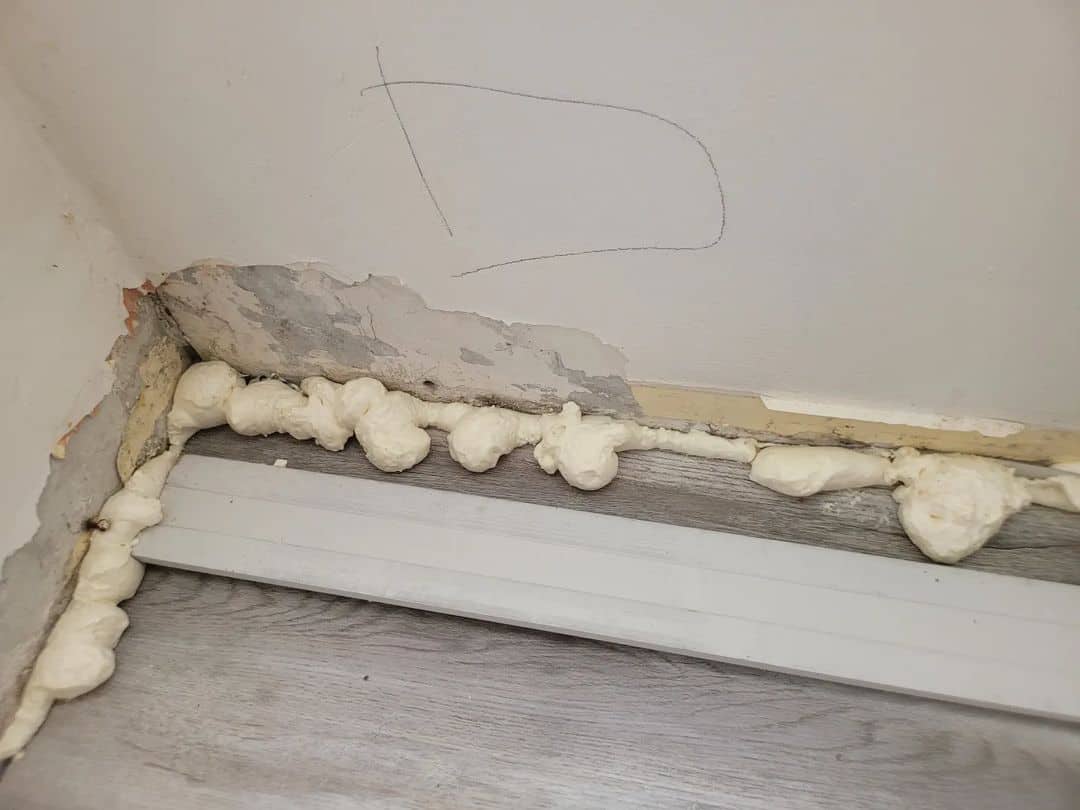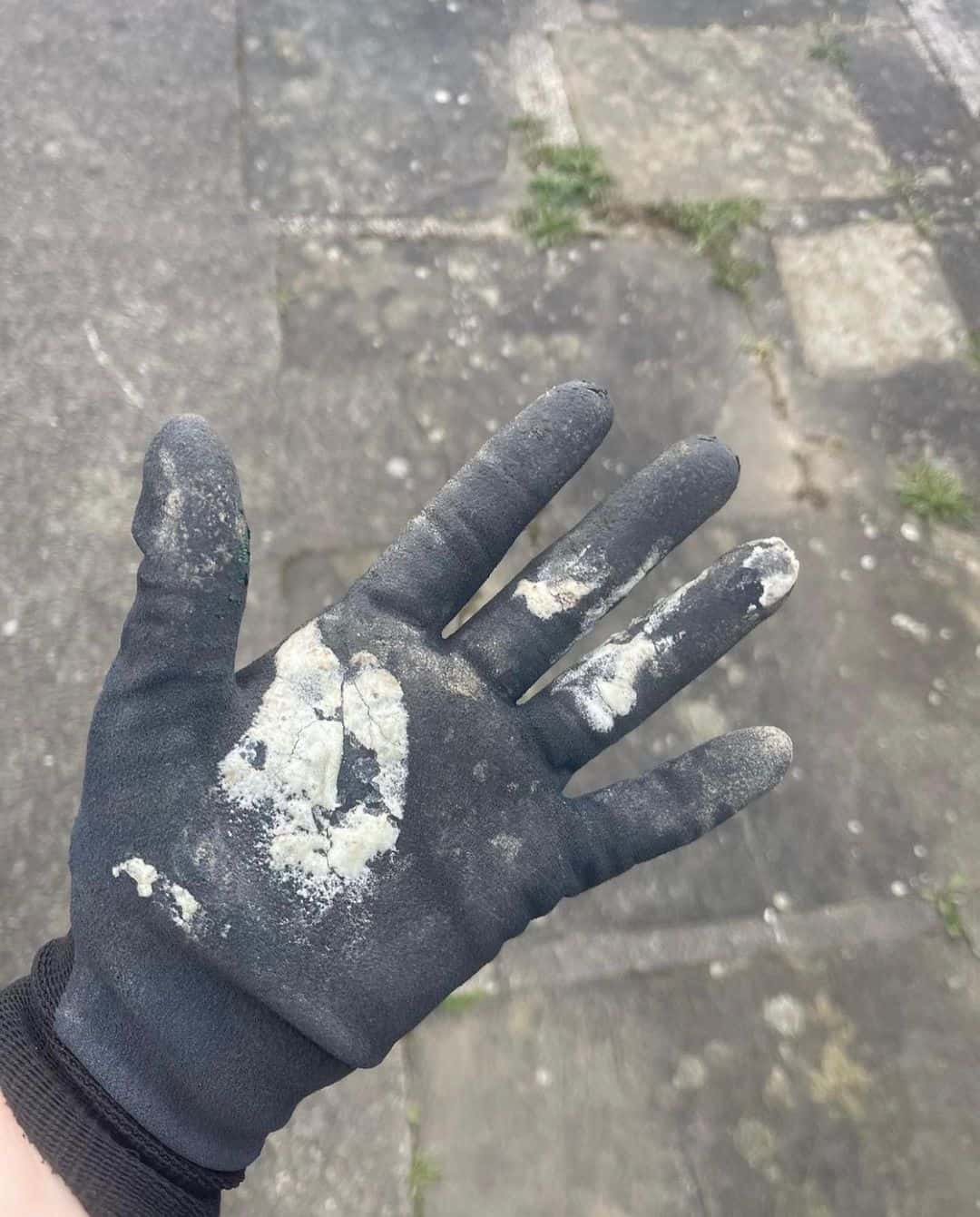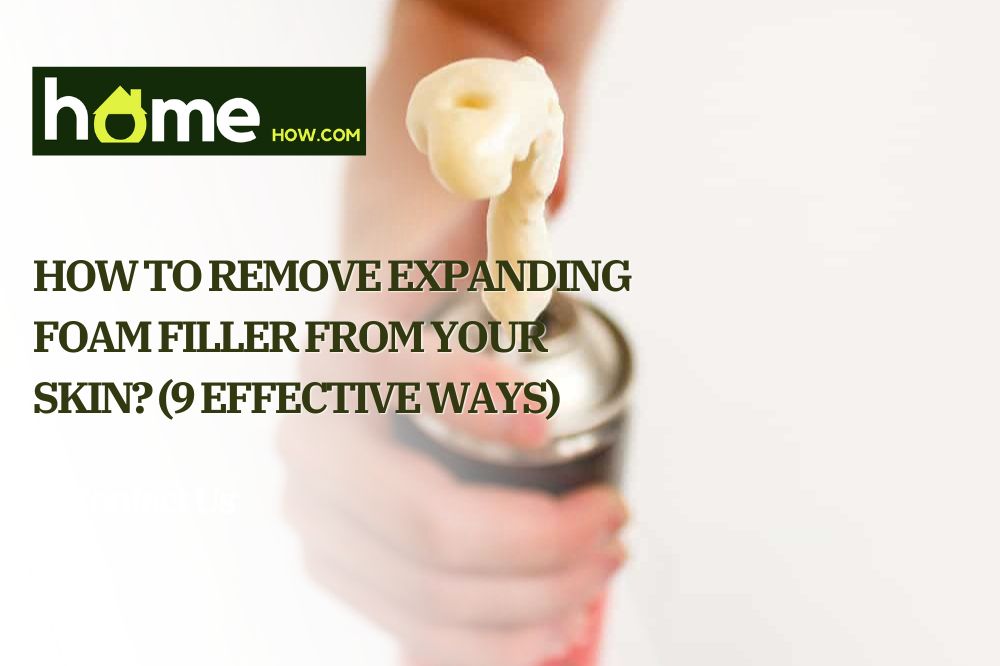All DIY enthusiasts know that expanding or polyurethane spray foam comes in handy when sealing awkward gaps, filling cavities, and providing insulation from heat, moisture, and sound. But since the material is sticky and compatible with several construction materials like wood, concrete, glass, and metal, it can get everywhere!
While doing your project, there’s a possibility that the spray foam can quickly stick to your skin and clothes. In a situation like this, stay calm and keep reading to learn about several methods to remove the expanding foam filler from your skin.
Removing Expanding Foam from the Skin
If there’s a small amount of foam on your skin, it won’t cause many issues, but if it’s in copious amounts, the foam can cause skin irritation. The time you take to remove the foam holds significance, as the more you delay removing it, the more difficult it becomes to remove it from the skin.
You should immediately wash it with water, as leaving it on the skin will eventually make it dry, requiring chemicals or solvents to remove the hardened foam.
Removing Wet Foam
Removing the foam before it hardens is much easier and more effective. Here are some methods you can use to remove the expanding foam from your skin:
1. Using Soap Water
To effectively remove the wet spray foam, follow the instructions listed below:
- Prepare a warm soapy water solution by mixing one tablespoon of dish soap in a large bowl filled with warm water and setting the mixture aside.
- Scrape the foam gently using a thin cardboard piece or an unusable plastic card. You’ll use the cardboard as a scraper to remove excess spray foam from the affected area.
- Once you have scrapped off the foam, wash the affected area thoroughly using warm soapy water.
- If you still feel foam sticking on the skin, repeat the process once more for complete removal.
- After you have completed the process, wash the affected area with tap water, pat dry with a paper towel, and apply vaseline.
Please avoid using a cloth to wipe the foam, as the material is sticky and can quickly spread over other skin parts. The foam can also stick to the fabric, causing further skin irritation when the cloth is pulled with force.
If this method fails, you can try other methods but remember that it’s best to get it done before the foam becomes hard. While the hardening time depends on the thickness of the spray foam layer, on average, it takes around 10 to 20 minutes for the foam to start hardening.
The foam will become completely hard after almost 90 minutes, and it’s long enough for you to try several methods until you achieve the desired results.
2. Using Acetone

The spray is a type of polyurethane foam and can be removed using chemicals and solvents. One effective solvent you can use is acetone. While it might be hard to get some acetone solvent, using a nail polish remover will work as it contains acetone and is relatively safer to use on the skin.
- Before using the remover, ensure the label mentions that it contains acetone and can be used on the skin without issues.
- As mentioned in the first method, scrape off the foam and apply the nail polish remover for maximum effectiveness. You can either pour the remover onto the foam or pour it into a bowl, soak a piece of fabric, and start cleaning.
- When the foam residue is removed, wash the skin with an exfoliating soap to remove any dried spray foam. If you don’t get the desired results, repeat the process again.
- Remember to apply a generous moisturizer or hand lotion to the affected area to prevent skin irritation during spray foam removal. The acetone method can also be used with other solvents like WD-40, lacquer thinner, and gasoline, but these methods can damage the skin.
A safer alternative to these solvents is Isopropyl alcohol. The solvent works effectively in dissolving the foam before it hardens. Pour the isopropyl alcohol gently over the foam to remove it, and apply moisturizer once the solvent dries.
When using these solvents, ensure you are present in a well-ventilated area to prevent inhalation of toxic fumes.
3. Using Baby Powder
Sprinkle a generous amount of baby powder on the foam and the affected area. Let the foam dry, and then peel it off without hassle.
Removing Hard Spray Foam

Removing the foam from the skin will require much more effort and patience if the foam gets hard. Fortunately, there are several methods you can try to remove the cured foam from the skin.
1. Shaving Skin Hair
As the foam sealant is extremely sticky in nature, it can easily stick to any area of the body. If the affected area has skin hair, consider shaving them to remove spray foam. Before shaving the hair, try breaking the foam into smaller pieces using your hands.
Start by applying shaving cream on the affected area and use a wet razor to cut off the foam clinging to the skin hair. Make razor strokes towards the direction of hair growth and wash the razor with hot water to clean the foam build-up on the razor blades.
2. Using a Pumice Stone
Besides using a pumice stone, you can use an emery board or a washable nail file. A medium grit sandpaper will also work if none of these materials are available. Use any of the materials mentioned to scrape off the hardened foam slowly.
Apply liquid soap on the affected area when scraping the hard foam from the skin. While you won’t require hard chemicals to remove the expanding foam, the method can potentially lacerate the skin if excessive force is used. Don’t forget to apply petroleum jelly after foam removal.
3. Using Baking Soda or Vegetable Oil
Apply a small amount of vegetable oil on the foam and then sprinkle a good amount of baking soda on top of it to soften it up. Then wash the affected area with soap water. You repeat the process several times to achieve the required results.
4. Using Isopropyl Alcohol
Take a large bowl and fill it up with isopropyl alcohol and dip a cloth in the solvent. Then place the damp cloth on the dried foam for at least 15 minutes before removing the spray foam. After some time, the foam will soften up and can be easily removed. This solvent effectively breaks the bond the foam makes with the skin. Even a thick layer of expanding foam can be removed using this method.
If the foam is on your hands or wrists, dip them directly in the bowl filled with isopropyl alcohol for at least 10 minutes before wiping it off using a dry cloth. Repeat the process if necessary.
5. Using Petroleum Jelly

Vaseline or petroleum jelly can be directly applied to the affected area to remove the skin. Take a generous amount of petroleum jelly in your fingers and gently rub it on the foam. Cover the area with a plastic glove or a cling wrap and leave it there for an hour.
The foam will soften up and can be easily removed by gentle scraping and washing hands with an exfoliating soap.
Removing Spray Foam from Hands
Besides dipping the hands in isopropyl alcohol, you can remove the foam by filling up a vinyl or rubber glove with water and dish soap. After filling the glove, insert the hand into the glove and tie it around your wrist using an elastic band or tape.
While most people recommend keeping the hand inside the glove for several hours to soften the foam and break the bond it makes with the skin, keeping it in for an hour will do the job.
After you remove the glove, you can use a pumice stone to scrape off the residual foam. Don’t worry, as your hand will look shriveled. Wash your hands again with fresh water, tap dry the hand, and apply moisturizer.
Seeking Medical Attention
It is imperative to wear gloves while working with spray foam, as the foam can stick to other areas of the body if exposed. The safest method we have listed includes soapy water and scraping to remove the foam.
Solvents like acetone, isopropyl alcohol, and other chemicals are undoubtedly effective but can cause skin irritation and even damage the skin further. For example, a person with sensitive skin can suffer from itching, skin redness, and other symptoms besides experiencing skin irritation.
Here are some situations when it’s best to seek medical attention:
- If you are experiencing uncontrollable skin irritation and itching while using any of the methods listed here, immediately stop and visit your nearest ER for effective treatment and care.
- While you should be wearing safety gear to protect your ears, eyes, and mouth from the foam, if the foam gets into these areas, immediately wash with water and visit your healthcare professional for a complete examination and subsequent treatment.
- If you are feeling skin irritation after applying a moisturizer.
- When you are unable to remove the foam for more than 90 minutes.
Bottom Line
The polyurethane spray will not irritate the skin immediately but will eventually cause itching and even inflammation when not removed for longer periods. Therefore, removing the spray foam immediately is crucial as is choosing the most feasible method.
However, if you still fail after using these methods, it’s best to seek medical attention to remove the foam and get the necessary treatment to protect the damaged skin.
